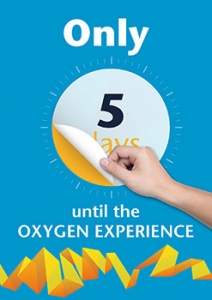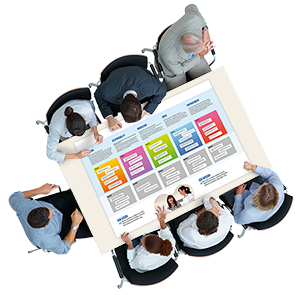Employee events can be incredibly powerful, stimulating inspiration, motivation and action.
They can make internal communication fun, personal and relevant, creating a sense of involvement. They can switch employees on and generate meaningful two-way dialogue.
When bringing together different business levels, it can be much easier for employees to get to know and trust senior management when they’re seen in action – involved and up for it.
Internal events can be useful when reviewing an organisation’s culture and preferred behaviours. They can be effective when assessing internal brand values, allowing employees to explore what it all means for them as individuals. For attendees, they’re a fantastic opportunity to meet other colleagues, receive information, resources and ideas, explore new possibilities and be inspired by the energy of the group.
Here are some thoughts on making the most of your internal events:
- DEFINE YOUR REQUIRED OUTPUTS. Consider your objectives and how they link to business goals. This will help with measurement once the event has taken place. Be sure about exactly WHY you’re holding the event and what you want people to do as a result.
- INVOLVE EMPLOYEES IN SETTING THE AGENDA AND FORMAT. Encourage ownership and buy-in at an early stage. Recruit and make the most of ‘event ambassadors’ – that goes for all levels including leadership. Early support, particularly from managers is vital. You could even recruit a team to own and manage elements of the event. They will be able to help generate interest and excitement amongst their colleagues as the day approaches.
- ENCOURAGE INPUT IN ADVANCE. Ask employees what they want, find out what inspires and energises them. Think about how your event can be tailored to your audience rather than just a bland gathering. If you’re running different activities, ask employees to vote on their preferred options. Keep it simple with only a few questions and use a basic tool like SurveyMonkey.
- RECRUIT EMPLOYEES AS HOSTS OR FACILITATORS. It’s a nice touch to assign supporters with their own specific responsibilities so they can each contribute directly to the success of the day. Attendees will enjoy seeing their peers helping out and it’s a great way to help bridge the gap if your organisation has a ‘them and us’ culture.
 DATE AND TIME. Is this going to be a lunch event or an all day affair? How does it fit into standard timings, weekly schedules and ongoing commitments? Can it be combined with year-end announcements or key performance updates?
DATE AND TIME. Is this going to be a lunch event or an all day affair? How does it fit into standard timings, weekly schedules and ongoing commitments? Can it be combined with year-end announcements or key performance updates?- VENUE AND THEME. Where should the event be? You may have suitable facilities in-house or prefer a change of scenery by opting for an external setting. If you’re having an away day, choose somewhere that reflects your brand and the theme of your event. Name your day with an interesting and intriguing title.
- SIGNAGE AND COLLATERAL. Figure out the overall look and feel of your event. That includes making sure that promotional material, signage and collateral are suitably branded and compliment each other. Keep in mind that you may need to have key materials approved by your graphics or marketing teams and fit within brand guidelines.
- CREATE A BUZZ! Consider ways to generate excitement as the day draws near. A well thought through ‘marketing plan’ which includes a variety of approaches such as interesting visual advertising, videos, quirky messages in the newsletter, and personal invitations can help to provoke interest and engagement. Many of our clients like to use a visual ‘countdown’ as major events and important moments approach.
- SOCIAL PLAN. Most successful events have a strong social strategy in place. Internal events can always benefit from early conversations that others can pick up and join. This is a great example of a ‘job role’ you can entrust to an employee or small team. Try to have someone sharing updates on the day which attendees can contribute to and employees from other parts of the business can benefit from as well.
 CREATE A TAKEAWAY MEMENTO. We like to help our clients create lasting memories of the events they hold. It’s a nice idea to put together a collection of key findings, summaries of sessions and images from the day. This could be done in printed format or perhaps create an interactive eBook to send out to all attendees.
CREATE A TAKEAWAY MEMENTO. We like to help our clients create lasting memories of the events they hold. It’s a nice idea to put together a collection of key findings, summaries of sessions and images from the day. This could be done in printed format or perhaps create an interactive eBook to send out to all attendees.- KEEP CONVERSATIONS ALIVE. Did any overriding themes emerge? How can you keep these conversations alive? Regular group meetings? Interview employees who are happy to share their experience and publish in the newsletter or on the intranet? How about setting up a social group of supporters? Or planning a follow-up event?
- MEASURE SUCCESS. What was the outcome? How well did it go? How was employee behaviour influenced? What does your feedback tell you? What can you learn from it? Don’t forget this key stage that will help you assess and analyse how the event performed against its objectives as well as what you can learn to make future events a success.
In summary
So there are a few thoughts and there will be many more, which will vary from industry type to event size and subject matter. Set out with the intention that your event will be a hit and that employees will walk away feeling part of something special; informed, excited and inspired. Most importantly, make sure it achieves the intended outcome by understanding your objectives, planning ahead and recruiting suitable support.
We’d love to hear about your event experiences and tips on how to make them a success. Tell all on Twitter @Alivewithideas.
















